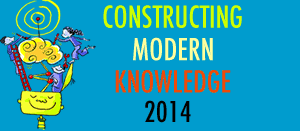From Gail Desler (aka Blogwalker) in a school district near Sacramento, CA.
Prairie Elementary Filmmakers Save a Regional Nature Program | BlogWalker.
“I was there – at the Sacramento Board of Directors – on Wednesday, joining other concerned educators and citizens in a last minute effort to save one of Sacramento’s primo science programs: Spash.
Thanks to Splash, thousands of elementary, middle, and high school students have explored life in Sacramento’s streams and, in the process, have come to understand why taking care of our water supply is so vital to the community. However, the Board was ready to eliminate the program as part of their latest round of budget cuts.
We had our chance to speak out, each person being allotted 3 minutes to justify continued funding for the program. With Splash director Eva Butler leading the charge, I think the 12 of us who took our turns at the podium helped provide the Board members with an understanding and appreciation that for most kids, “Splash is their first experience with relevant science and things that live beyond the pavement in Sacramento’s streams and vernal pools.”
But it was clearly a team of 5th grade filmmakers from Prairie Elementary School (Lesley McKillop’s former 4th graders) who saved the program. In less than 2 minutes, their Saving Splash video (see snippets in the above TV coverage) provided a compelling argument that led to a unanimous vote to save the program.
A huge victory for students all over the Sacramento region – and a powerful lesson to our young filmmakers on the importance of taking a stand and the power of media to sway an audience.”
If you don’t know, California schools are going through some incredibly tough fiscal times. Yes, I know that’s true all across the US, but California school’s are especially dependent on property taxes, and California real estate was subject to some of the biggest bubble bursting in the country. So the fact that these young filmakers changed a decision in these times especially affirms the power of student voice.
Here’s another reason - the subject of water and the science behind it. The city of Sacramento is at the heart of the California Central Valley Delta. This inland water system is the ecological lifeblood of the state and nourishes one the richest agricultural areas in the U.S. On less than 1 percent of the total farmland in the United States, the Central Valley produces 8 percent of the nation’s agricultural output by value, most of it fed by human engineered water systems (source). Understanding water ecology is vital to Sacramento citizens. So this testimonial about elementary school students saving a science program with their media skills is no joke. This is not just media literacy, it’s science, politics, and ecology! This is certainly the “real world” that we want students to experience.
Thanks, Gail, for sharing Prairie Elementary Filmmakers Save a Regional Nature Program
Sylvia

